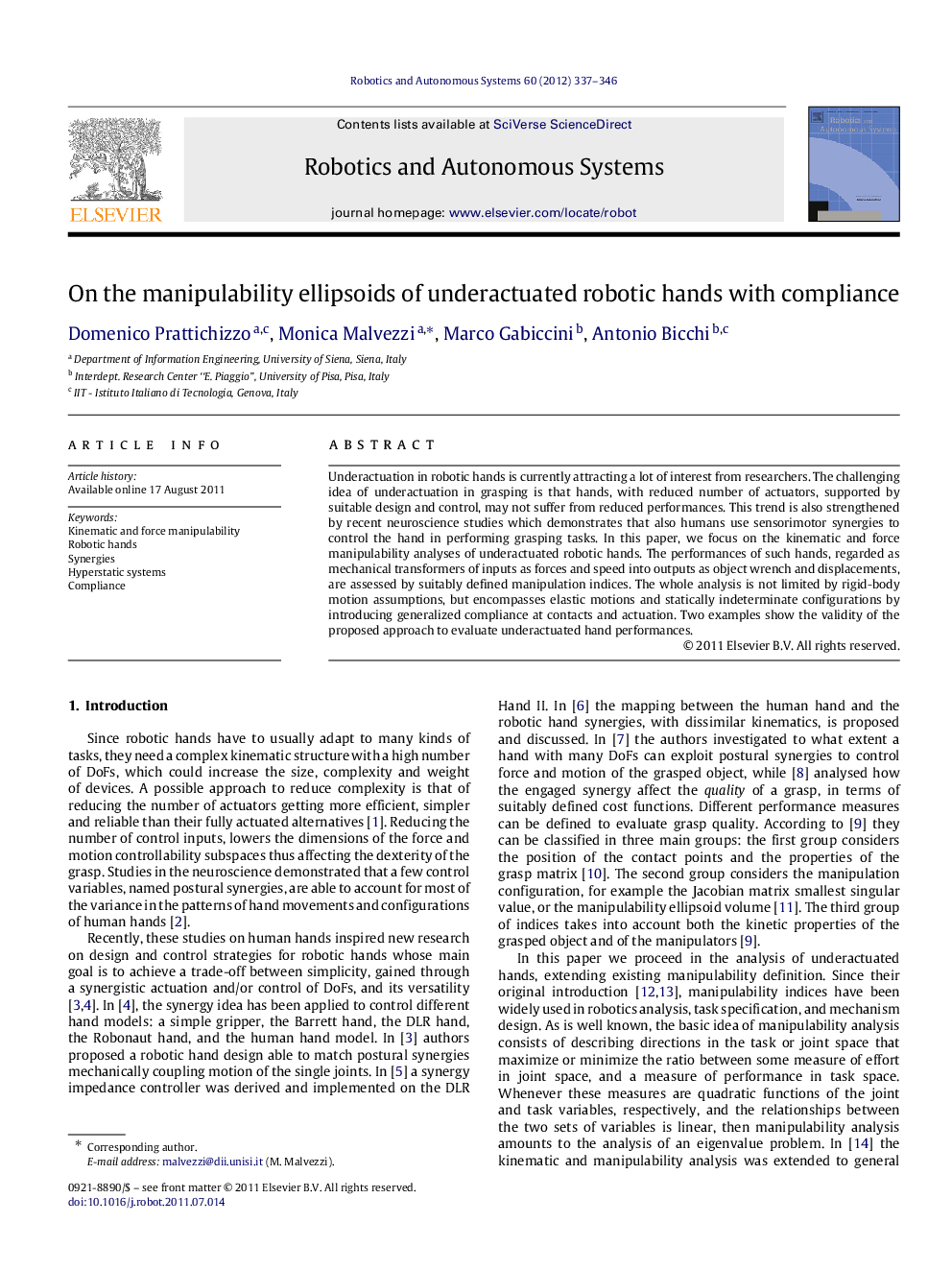| Article ID | Journal | Published Year | Pages | File Type |
|---|---|---|---|---|
| 411479 | Robotics and Autonomous Systems | 2012 | 10 Pages |
Underactuation in robotic hands is currently attracting a lot of interest from researchers. The challenging idea of underactuation in grasping is that hands, with reduced number of actuators, supported by suitable design and control, may not suffer from reduced performances. This trend is also strengthened by recent neuroscience studies which demonstrates that also humans use sensorimotor synergies to control the hand in performing grasping tasks. In this paper, we focus on the kinematic and force manipulability analyses of underactuated robotic hands. The performances of such hands, regarded as mechanical transformers of inputs as forces and speed into outputs as object wrench and displacements, are assessed by suitably defined manipulation indices. The whole analysis is not limited by rigid-body motion assumptions, but encompasses elastic motions and statically indeterminate configurations by introducing generalized compliance at contacts and actuation. Two examples show the validity of the proposed approach to evaluate underactuated hand performances.
► We introduce the quasi-static analysis of underactuated hands including compliance. ► We focus on manipulability analysis of underactuated hands. ► Two examples show the validity of the proposed approach to evaluate underactuated hand performances.
